Images from the deep unveil weird and wild sea critters
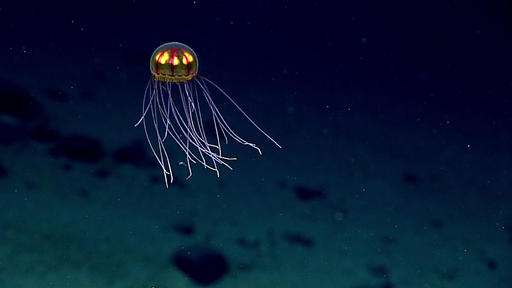
New images from recent exploration voyages show how weird and wild it is under the sea.
Some of the pictures taken by remote cameras of never-before-seen areas, especially off the eastern Pacific, show what looks like an imaginary world. There's a delicate jellyfish, an eel with a strange head and a purple disco ball-like critter. And just in time for Halloween, there's a rare purple Vampire Squid, nicknamed for its red eyes and deep color. The images are being shown as part of the National Ocean Exploration Forum this week in New York.
"We're continually surprised by the variety of life that we find and what we're seeing," said Nicole Raineault, science operations director at the Ocean Exploration Trust. "It just underscores what little we know about the ocean and how much more there is to discover out there."
National Oceanic and Atmospheric Administration undersea exploration off the Pacific coast found hundreds of undersea vents spewing methane—a potent heat-trapping gas—that scientists didn't know existed, said Bob Embley, a NOAA senior research scientist.
-
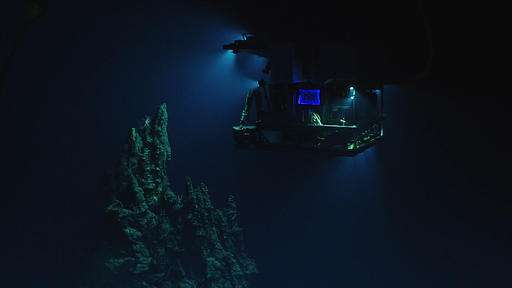
This April 28, 2016 image made available by NOAA shows the remotely operated vehicle Deep Discoverer surveying a 14-meter (46-foot) hydrothermal chimney during a deepwater exploration of the Marianas Trench Marine National Monument area in the Pacific Ocean near Guam and Saipan. Dives in the expedition ranged from 250 to 6,000 meters (820 feet to 3.7 miles) deep. (NOAA Office of Ocean Exploration and Research via AP) -
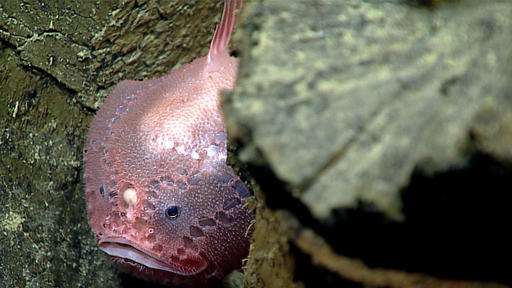
This April 30, 2016 image made available by NOAA shows a deep sea anglerfish living between pillow basalt rock formations, during a deepwater exploration of the Marianas Trench Marine National Monument area in the Pacific Ocean near Guam and Saipan. The ambush predator waits for prey to be attracted by its lure, located between its eyes, and gulps it with its large mouth. (NOAA Office of Ocean Exploration and Research via AP) -
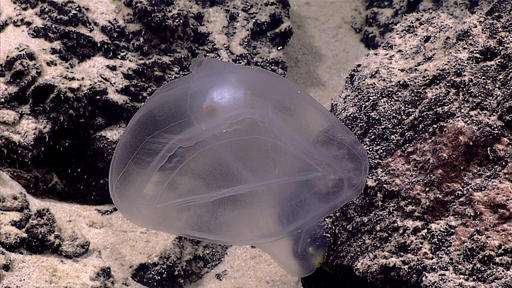
This April 26, 2016 image made available by NOAA shows a predatory tunicate, an invertebrate animal, during a deepwater exploration of the Marianas Trench Marine National Monument area in the Pacific Ocean near Guam and Saipan. Dives in the expedition ranged from 250 to 6,000 meters (820 feet to 3.7 miles) deep. (NOAA Office of Ocean Exploration and Research via AP) -
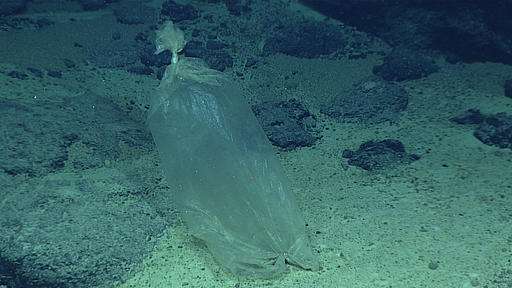
This April 22, 2016 image made available by NOAA shows a plastic ice bag found at the Enigma Seamount, during a deepwater exploration of the Marianas Trench Marine National Monument area in the Pacific Ocean near Guam and Saipan. Dives in the expedition ranged from 250 to 6,000 meters (820 feet to 3.7 miles) deep. (NOAA Office of Ocean Exploration and Research via AP) -
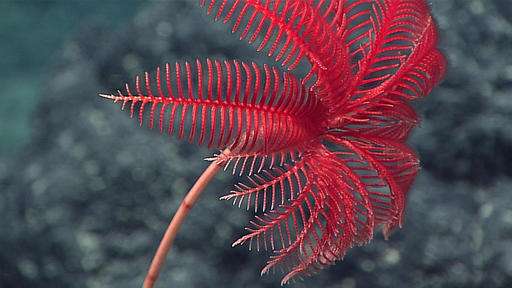
This April 29, 2016 image made available by NOAA shows the feeding arms of a stalked crinoid animal during a deepwater exploration of the Marianas Trench Marine National Monument area in the Pacific Ocean near Guam and Saipan. Dives in the expedition ranged from 250 to 6,000 meters (820 feet to 3.7 miles) deep. (NOAA Office of Ocean Exploration and Research via AP) -
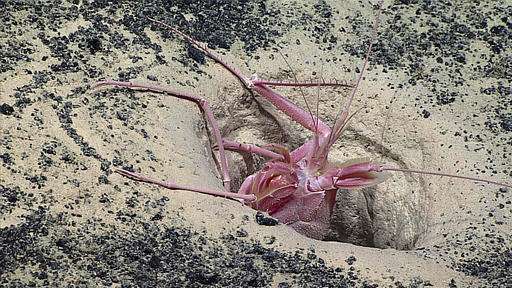
This April 30, 2016 image made available by NOAA shows a large blind lobster popping its head out of a hole during a deepwater exploration of the Marianas Trench Marine National Monument area in the Pacific Ocean near Guam and Saipan. Dives in the expedition ranged from 250 to 6,000 meters (820 feet to 3.7 miles) deep. (NOAA Office of Ocean Exploration and Research via AP) -
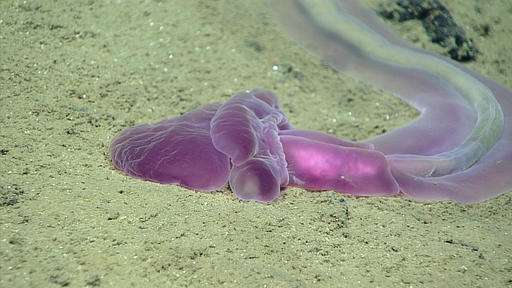
This June 30, 2016 image made available by NOAA shows an acorn worm on the "Twin Peaks" underwater formation during an exploration of the Marianas Trench Marine National Monument area in the Pacific Ocean near Guam and Saipan. Dives in the expedition ranged from 250 to 6,000 meters (820 feet to 3.7 miles) deep. (NOAA Office of Ocean Exploration and Research via AP) -
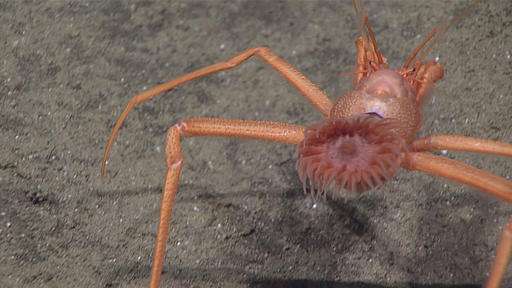
This May 4, 2016 image made available by NOAA shows a parapagurid hermit crab hosting an anemone which secretes a "shell" for the crab, during a deepwater exploration of the Marianas Trench Marine National Monument area in the Pacific Ocean near Guam and Saipan. Hermit crabs usually use a snail or other shell as protection. (NOAA Office of Ocean Exploration and Research via AP) -
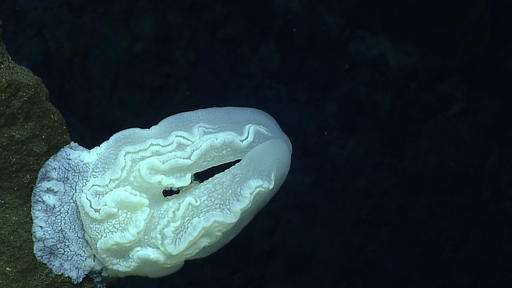
This June 22, 2016 image made available by NOAA shows a benthic comb jelly fish at the Ahyi Seamount, during a deepwater exploration of the Marianas Trench Marine National Monument area in the Pacific Ocean near Guam and Saipan. Dives in the expedition ranged from 250 to 6,000 meters (820 feet to 3.7 miles) deep. (NOAA Office of Ocean Exploration and Research via AP) -
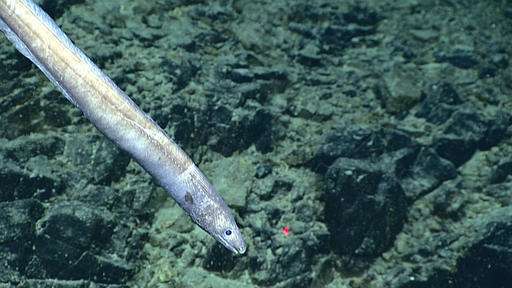
This June 27, 2016 image made available by NOAA shows a cutthroat eel at 3,145 meters (1.9 miles) deep on Stegasaurus Ridge, during a deepwater exploration of the Marianas Trench Marine National Monument area in the Pacific Ocean near Guam and Saipan. The eels are abundant in the deep ocean and active day and night. (NOAA Office of Ocean Exploration and Research via AP) -
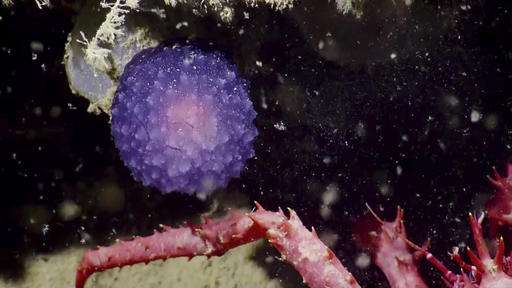
In this July 2016 image made available by the Ocean Exploration Trust, a crab, bottom, stands near an unidentified purple orb during a deep sea expedition around the Channel Islands off the coast of California. After sampling, it began to unfold to reveal two distinct lobes; researchers thing it may be a pleurobranch sea slug, a close relation to the nudibranch, but currently, none of the known species of California deep-sea pleurobranchs are purple. (Nautilus Live/Ocean Exploration Trust via AP) -
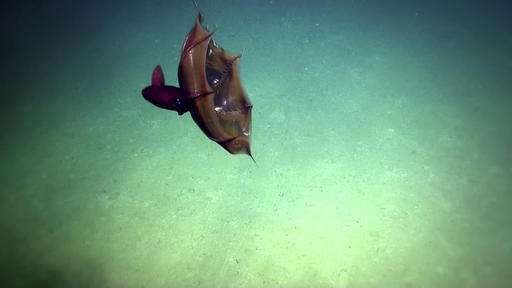
This June 27, 2014 photo made available by the Ocean Exploration Trust shows a vampire squid (Vampyroteuthis infernalis), a deep-sea cephalopod, during an overnight dive in the Gulf of Mexico. Its name comes from its deep color and red eyes, not because it feeds on blood. (ECOGIG/Nautilus Live/Ocean Exploration Trust via AP) -
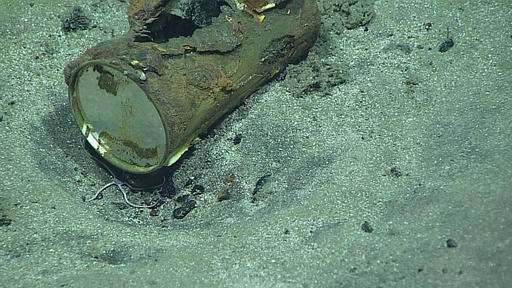
This June 29, 2016 image made available by NOAA shows a can on an unnamed seamount at a depth of 3,306 meters (2 miles), during a deepwater exploration of the Marianas Trench Marine National Monument area in the Pacific Ocean near Guam and Saipan. Dives in the expedition ranged from 250 to 6,000 meters (820 feet to 3.7 miles) deep. (NOAA Office of Ocean Exploration and Research via AP) -
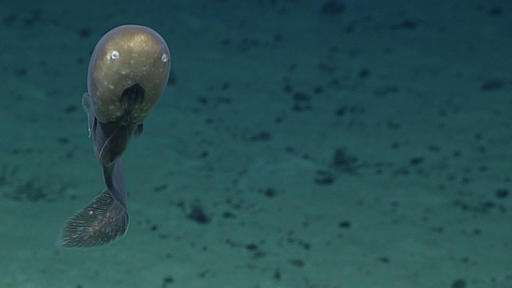
This June 29, 2016 image made available by NOAA shows a cusk eel with an unusual bulbous head shape with small eyes, large nostrils, and a mouth placed low on the head, during a deepwater exploration of the Marianas Trench Marine National Monument area in the Pacific Ocean near Guam and Saipan. Researchers believe this could be a new species. (NOAA Office of Ocean Exploration and Research via AP) -
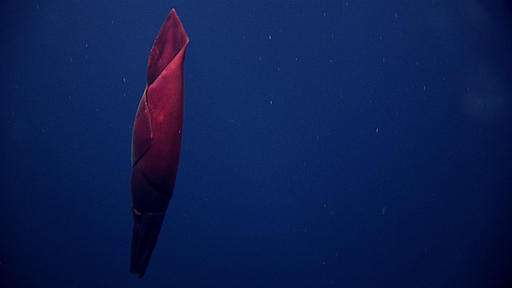
This June 30, 2016 image made available by NOAA shows a squid as the remote operated vehicle Deep Discoverer descends to the seafloor of the Marianas Trench Marine National Monument area in the Pacific Ocean near Guam and Saipan. Dives in the expedition ranged from 250 to 6,000 meters (820 feet to 3.7 miles) deep. (NOAA Office of Ocean Exploration and Research via AP) -
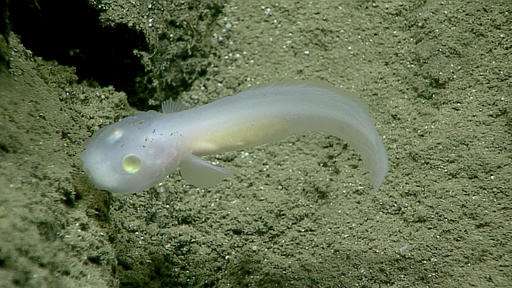
This June 30, 2016 image made available by NOAA shows a fish, of the family Aphyonidae, which had never before been seen alive, during a deepwater exploration of the Marianas Trench Marine National Monument area in the Pacific Ocean near Guam and Saipan. Dives in the expedition ranged from 250 to 6,000 meters (820 feet to 3.7 miles) deep. (NOAA Office of Ocean Exploration and Research via AP) -
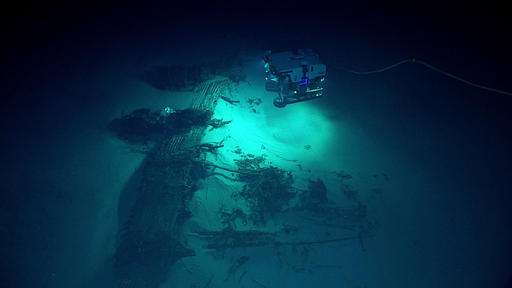
This July 9, 2016 image made available by NOAA shows the remote operated vehicle Deep Discoverer examining the wreckage of a B-29 Superfortress bomber plane upside-down on the seafloor during a deepwater exploration of the Marianas Trench Marine National Monument area in the Pacific Ocean near Guam and Saipan. Over a dozen American B-29s were lost in the area during World War II. (NOAA Office of Ocean Exploration and Research via AP)
© 2016 The Associated Press. All rights reserved.


















